May 18th, 2012
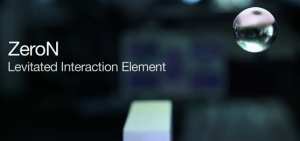 A computer, some additional hardware and a bit of physics levitates a metal ball in 3D space. You are free to move the ball and the computer tracks the motion and keeps the ball stable. Likewise the computer can move the ball to execute a program or communicate with the user. This seemingly simple interface unlocks a wide range of interface possibilities. Many with strong implications for cognitive designers. Check out the video.
A computer, some additional hardware and a bit of physics levitates a metal ball in 3D space. You are free to move the ball and the computer tracks the motion and keeps the ball stable. Likewise the computer can move the ball to execute a program or communicate with the user. This seemingly simple interface unlocks a wide range of interface possibilities. Many with strong implications for cognitive designers. Check out the video.

Posted in Related Fields | No Comments »
May 17th, 2012
Understanding and meeting deeply-felt psychological needs is the primary goal of cognitive design. So I am always on the look out for studies that reveal how we think-and-feel in everyday situations in enough detail to have implications for designers.
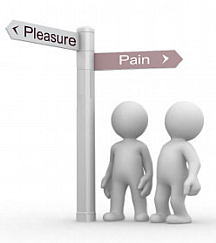 Take for example, the recent research done at the University of Alberta on Pleasure, pain and the satisfied customer. They studied emotional reactions to service experiences and purchases and found significant difference between consumers that are primarily promotion-focused or pleasure seeking and those that are prevention-focused or pain avoiding. The bottom line:
Take for example, the recent research done at the University of Alberta on Pleasure, pain and the satisfied customer. They studied emotional reactions to service experiences and purchases and found significant difference between consumers that are primarily promotion-focused or pleasure seeking and those that are prevention-focused or pain avoiding. The bottom line:
Pleasure seekers have a stronger emotional reaction when things go well or bad while those that avoid pain have a more muted emotional response.
This has clear implications for experience and service designers looking to leverage emotional energy. Focus on pleasure seekers!
While over generalized, the researchers go on to suggestion that men and younger people tend to be pleasure seekers while women and older people tend to try and avoid pain. They offer some practical advice for service recovery and word-of-mouth marketing:
“To some extent, they can tell front-line people that, as older people approach them, they’re going to be more prevention-focused, they’re not going to be as extreme either way,” said Murray. “But when something has gone really wrong with that 21-year-old’s game console, they’re going to be a lot more upset and more likely to tell their friends.
“On the flip side, when they take it home and it works well and they really enjoy it, they’re more excited and happy, and more likely to tell their friends about it.”
The pleasure-pain psychographic is strong enough to warrant a review of your product designs, service processes and even internal employee programs.

Posted in Psychographics, Service Innovation | No Comments »
April 8th, 2012
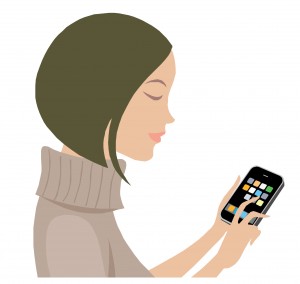 A major challenge in cognitive design is getting good data on mental states. Knowing what people are really thinking and feeling as they perform certain tasks, test a prototype or just go about their daily routine is hard to do. Brain scans are not practical and self reports and observations are limited in value.
A major challenge in cognitive design is getting good data on mental states. Knowing what people are really thinking and feeling as they perform certain tasks, test a prototype or just go about their daily routine is hard to do. Brain scans are not practical and self reports and observations are limited in value.
So I am always on the lookout for new ways of measuring mental states outside a laboratory setting. Samsung has developed a prototype smart phone to do just that. MIT’s Technology Review reports:
“For example, it monitors certain inputs, such as the speed at which a user types, how often the “backspace” or “special symbol” buttons are pressed, and how much the device shakes. These measures let the phone postulate whether the user is happy, sad, surprised, fearful, angry, or disgusted…”
While this is still a low-accuracy prototype it is suggestive. Perhaps soon we will have an App that can be used to infer and record mental states under a wide variety of conditions. Being able to do that with just an App rather than special purpose hardware is the key.

Researchers from the Department of Preventative Medicine at Northwestern University are trying to do just that. They want to detect and help manage moods using an ordinary smart phone and App called Mobilyze:
“Mobilyze uses data from sensors already embedded in the phone, such as GPS, Bluetooth, WiFi, accelerometers, etc., and uses them to identify patient states. The aim is to develop an automated system for detecting mood-related states, without requiring patient self-report. This context-aware application on the mobile phone has the potential to address non-adherence and other treatment difficulties as they occur in real-time. “
This App is clinically focused but signals we are close to having the technology to measure mental states using a smart phone. That will be a big shot in the arm for an empirical approach to cognitive design.

Posted in Psychographics | 17 Comments »
March 28th, 2012
 About 25% of the queries I get for consulting work in cognitive design have to do with ethics. Employers large and small are worried about the lack of ethical behavior in the workplace. Ethics is an interesting area to work in because it pulls on everything from moral philosophy to cognitive science and behavior change. Business ethics has been the biggest boom of all time for the applied philosopher.
About 25% of the queries I get for consulting work in cognitive design have to do with ethics. Employers large and small are worried about the lack of ethical behavior in the workplace. Ethics is an interesting area to work in because it pulls on everything from moral philosophy to cognitive science and behavior change. Business ethics has been the biggest boom of all time for the applied philosopher.
How to design and implement a successful workplace ethics program is an open issue. So I am always on the look out for new scientific research into moral cognition, ethical behaviors and value-based decision making. Found an interesting post on Futurity about research done at UC Berkley on the connection between your attitudes about greed and your propensity to cheat, lie and otherwise engage in unethical behavior. Specifically they:
“… consistently found that upper-class participants were more likely to lie and cheat when gambling or negotiating, cut people off when driving, and endorse unethical behavior in the workplace.”
However, upon further investigation they found it was not socio-economic status that was the primary driver of unethical behavior but participants’ attitudes and beliefs about greed. Participants that were primed to see the benefits of greed tended to act more unethically.
While this might not be too surprising, having scientific evidence for any predictive factor of unethical behaviors is critical to designing effective workplace ethics programs.

Posted in Uncategorized | 3 Comments »
March 24th, 2012
 In cognitive design we place primary emphasis on using features and functions to create thoughts and feelings. Objects and artifacts are interesting only in so far as the mental states they create. It is all about think-and-feel especially in domains where having psychological impact is the primary objective as in education, healthcare, communication, improving knowledge worker productivity, entertainment and many other areas.
In cognitive design we place primary emphasis on using features and functions to create thoughts and feelings. Objects and artifacts are interesting only in so far as the mental states they create. It is all about think-and-feel especially in domains where having psychological impact is the primary objective as in education, healthcare, communication, improving knowledge worker productivity, entertainment and many other areas.
We need to design and engineer products, services and even organizations so that they are optimized for how individual and group minds really work. While this statement is a given for regular readers of the Cognitive Design blog, is it far from broadly accepted.
So I am always on the look out for scientific studies that demonstrate the value created by think-and-feel. Take for example, the recent study reported in the Journal of Personality and Social Psychology that shows we place more value on experiential purchases than we do material purchases. More specifically, they found experiences such as vacations hold more value than products such as clothes. Experiences are easier to integrate with our identities and can be savored and shared more flexibility than possessions. They require active participation and naturally tend to be more transformative than objects.
Importantly, the researchers:
“show that the tendency to cling more closely to cherished experiential memories is connected to the greater satisfaction people derive from experiences than possessions”
This reveals the primary importance of cognitive design.

Posted in Related Fields, Service Innovation | 4 Comments »
March 10th, 2012
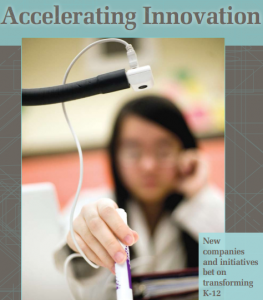 Nearly everyone agrees that the K-12 educational system in the US is in trouble. High dropout rates, poor international rankings, high cost and an industrial age focus on teaching rather than a knowledge age focus on learning all signal the model has run its course. A regulated, political and fragmented market, K-12 has traditionally been closed to the normal forces of creative destruction that remake service/business models that go bad. All that may be changing.
Nearly everyone agrees that the K-12 educational system in the US is in trouble. High dropout rates, poor international rankings, high cost and an industrial age focus on teaching rather than a knowledge age focus on learning all signal the model has run its course. A regulated, political and fragmented market, K-12 has traditionally been closed to the normal forces of creative destruction that remake service/business models that go bad. All that may be changing.
According to the report Acceleration Innovation in Education Week, the pace of innovation in the K-12 market is seeing an unprecedented uptick. Foundations and VCs have poured in a record amount of cash, incubators have sprung up and a small but diverse portfolio of start-ups are in motion. Key areas include hybrid charter models that combine online with face-to-face delivery and all facets of educational technology.
All of this is great news for cognitive designers that want to be entrepreneurs. After all, successful innovation in K-12 requires a good deal of luck or a deep understanding of the cognitive needs of learners.

Posted in Related Fields, Service Innovation | No Comments »
February 22nd, 2012
I’ve been asking many students that question lately.
 This semester I am a visiting instructor of physics at Indiana University Purdue University in Fort Wayne (IPFW). I love physics and teaching it is loaded with fundamental challenges in cognitive design. In many ways, the physics classroom is a cognitive design laboratory. I’m hopeful the lessons I learn there will transfer to my consulting efforts in the workplace.
This semester I am a visiting instructor of physics at Indiana University Purdue University in Fort Wayne (IPFW). I love physics and teaching it is loaded with fundamental challenges in cognitive design. In many ways, the physics classroom is a cognitive design laboratory. I’m hopeful the lessons I learn there will transfer to my consulting efforts in the workplace.
One of the challenges involved in helping others learn physics is correcting deeply held misconceptions about how the world works. From seemingly simple ideas about position, velocity, force and acceleration to more basic assumptions about the nature of space and time, our common sense is loaded with conceptual mistakes. We have the same challenges in the workplace only they have to do with how employees think about innovation, customers, quality and other basic notion that drives performance.
So I am always on the lookout for new scientific research into the memory of deeply held but false beliefs. For example, Duke University just published some interesting research on the hypercorrection effect. They found student’s confidence in their answer plays a big role in how they correct misunderstandings. The higher the confidence the more readily the student makes a correction but without reinforcement the effect lasts about a week. More specifically:
“Although high-confidence errors may be easily corrected in the short-run, our findings suggest that one presentation of feedback is not enough to produce a long-lasting correction of deeply entrenched false knowledge,” Butler said. “Without further practice, high-confidence errors seem to be more likely to return over time.”
This means that some deeply held beliefs might not really be that hard to change, at least initially. From a teaching standpoint there is a premium on knowing which errors occur with high confidence. Such topics require additional work even if the initial error appears to be corrected.
How can we collect and use confidence-in-response information in the evaluation and learning process?
Image: Mark Master’s Laser Lab at IPFW.

Posted in Cognitive Bias, Memory | 16 Comments »
February 17th, 2012
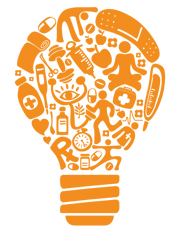 MISSING: Enough physical activity during the school day to help avoid childhood obesity. REWARD offered to any party (school program or technology developer) that can find it by April 2, 2012.
MISSING: Enough physical activity during the school day to help avoid childhood obesity. REWARD offered to any party (school program or technology developer) that can find it by April 2, 2012.
There is a $100,000 reward for the school programs that do the best at engaging kids in quality physical activity and a $50,000 reward for technology developers that can deliver innovative ways to motivate daily physical activity at school at beyond.
This a national innovation contest with a total of $0.5M in prize money. Definitely a cognitive design challenge.
Image: Physical Activity – the best medicine?

Posted in Behavior Change, Events | No Comments »
February 15th, 2012
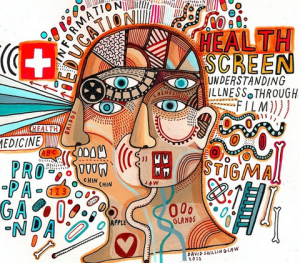 When you get sick how you think about your illness strongly determines the decisions you make and how you behave. Do you believe you will get better? How long will it take? Is the cause mysterious? Is the treatment plan offered by your doctor worth following?
When you get sick how you think about your illness strongly determines the decisions you make and how you behave. Do you believe you will get better? How long will it take? Is the cause mysterious? Is the treatment plan offered by your doctor worth following?
Beliefs shape decisions and decisions shape behaviors. This is no surprise to readers of the cognitive design blog. What is a bit surprising is how big an impact your mental model about an illness can have on the speed, quality and cost of recovery. Consider a recent meta-study on patient perception of illness:
“The authors find that people’s illness perceptions bear a direct relationship to several important health outcomes, including their level of functioning and ability, utilization of health care, adherence to treatment plans laid out by health care professionals, and even overall mortality.”
The good news is:
“Research confirms that brief, straightforward psychoeducational interventions can modify negative illness beliefs and lead to improvements over a range of different health outcomes.”
This means a little cognitive design in clinician-patient communication can directly translate into strong medicine.
Image: Medfest 2012

Posted in Psychographics, Related Fields | No Comments »
February 10th, 2012
Posted in Uncategorized | No Comments »
 A computer, some additional hardware and a bit of physics levitates a metal ball in 3D space. You are free to move the ball and the computer tracks the motion and keeps the ball stable. Likewise the computer can move the ball to execute a program or communicate with the user. This seemingly simple interface unlocks a wide range of interface possibilities. Many with strong implications for cognitive designers. Check out the video.
A computer, some additional hardware and a bit of physics levitates a metal ball in 3D space. You are free to move the ball and the computer tracks the motion and keeps the ball stable. Likewise the computer can move the ball to execute a program or communicate with the user. This seemingly simple interface unlocks a wide range of interface possibilities. Many with strong implications for cognitive designers. Check out the video.








